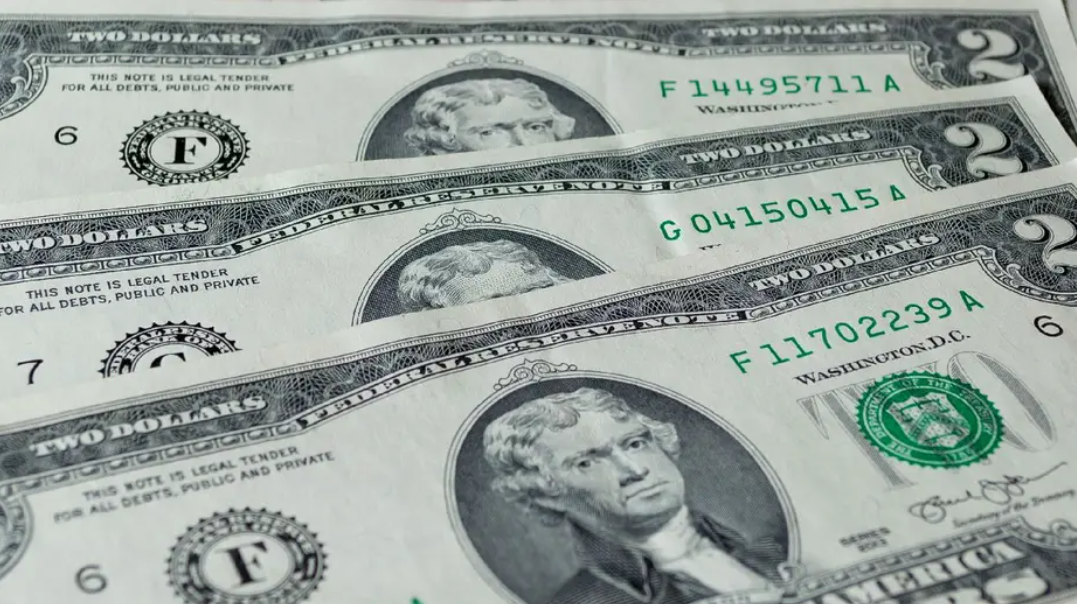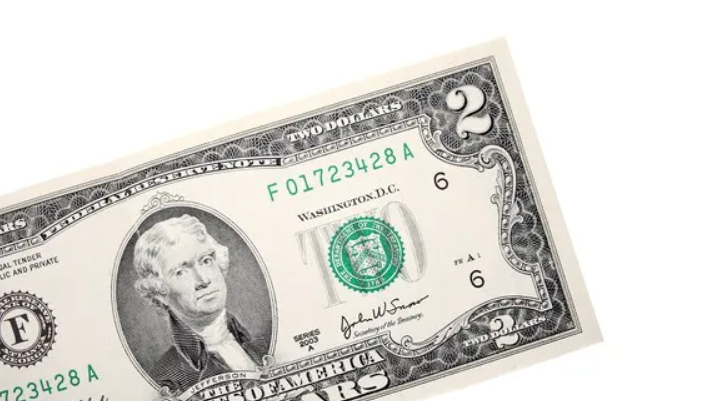Many individuals overlook or underestimate the true worth of their $2 bills, often assuming these notes are simply novelty items or rare collector’s pieces. However, these bills can carry a significant value, especially if they are in pristine condition, belong to a rare series, or bear uncommon signatures. Despite their apparent insignificance, $2 bills actually hold an intriguing place in the realm of currency and can be a surprisingly valuable asset.
In terms of face value, a $2 bill is worth exactly that – two dollars. However, its real value can greatly exceed this amount depending on the bill’s condition, the series to which it belongs, and various other factors. For instance, a $2 bill from the 1928 series in uncirculated condition can be worth up to $85, while a star note from the same series could fetch up to $150.
These bills can also hold more hidden value based on their historical significance. The $2 bill, first commissioned in 1862, features the portrait of Thomas Jefferson on the obverse and the depiction of John Trumbull’s painting, “The Signing of the Declaration of Independence”, on the reverse. This makes the $2 bill an interesting piece of American history, adding an extra layer of value for history buffs and collectors.
In addition, $2 bills are often considered lucky and are frequently carried as a good luck charm. This superstition has its roots in the early 20th century, when the rarity of the $2 bill led people to consider it a symbol of good fortune. Today, many people still cling to this tradition, adding a sentimental value to the $2 bill that can’t be measured in monetary terms.
The rarity of the $2 bill also adds to its value. Since the bill is not commonly used in daily transactions, many people never come across one in their change. This rarity can increase the value of a $2 bill, especially if it is in good condition or part of a rare series.
Furthermore, $2 bills can also hold significant value for collectors. Due to their uncommon nature, these bills are often sought after by currency collectors. Some collectors may be willing to pay a premium for $2 bills, especially if they are in excellent condition or have unique features, such as rare signatures or misprints.
In conclusion, while the $2 bill may seem insignificant at first glance, it can hold substantial hidden value. Whether this value is derived from the bill’s condition, its historical significance, its perceived luck, its rarity, or its appeal to collectors, it’s clear that the $2 bill is more than just a novelty item. So the next time you come across a $2 bill, take a closer look – you might just discover that it’s worth more than you think.

Why Your $2 Bills Might Be Worth More Than You Think
Many people overlook the value of $2 bills, considering them as mere ordinary pieces of paper. However, in the world of numismatics – the study or collection of currency – they might be worth much more than their face value. This is primarily due to the fact that $2 bills are relatively uncommon in everyday transactions, often making their way into collections rather than cash registers. Consequently, their curiosity value can significantly exceed their nominal worth.
Furthermore, the value of these bills is also influenced by their condition and series. Mint condition bills, particularly those from older series, are highly sought after by collectors and can fetch a premium. Uncirculated $2 bills, for instance, can be worth several times their face value. The value also varies based on the bill’s unique attributes, such as rare printing errors or special serial numbers. For example, a $2 bill with a star in the serial number or a misprint can be sold for a higher price.
In addition, in some cultures and contexts, $2 bills are considered to be symbols of good luck and prosperity, which can further enhance their demand and value. They are often given as gifts during special occasions, and some individuals choose to keep them as good luck charms rather than spending them. As a result, $2 bills may have a sentimental value that goes beyond their financial worth.
So, before you decide to spend your $2 bills, it might be worth taking a moment to consider their potential value. You may be holding onto a small treasure without even realizing it. It’s not unheard of for rare or special $2 bills to be sold at auctions for hundreds, or even thousands, of dollars. Hence, these seemingly ordinary bills might be worth more than you think.
Key Features to Look for in Valuable $2 Bills
When searching for valuable $2 bills, there are several key features to consider. First, keep an eye out for bills with a star at the end of the serial number. These “star notes” are replacements for misprinted bills and are rarer than typical notes. The condition of the bill is also crucial; bills that are crisp, clear, and free from folds, creases, or tears are usually more valuable. Bills with unique or low serial numbers, such as those beginning with a series of zeros, are also often worth more.
Look for the prefix letter on the bill: an “A” signifies the bill was printed in Washington D.C., while other letters denote various regional Federal Reserve Banks. Bills printed in smaller cities can be worth more due to their rarity. Red ink seals and serial numbers, found on bills dating from 1928 to 1953, can also increase the bill’s value. The series date can also impact value, with older bills generally being worth more, particularly if they are from discontinued or rare series.
Lastly, certain design features can make a $2 bill more valuable. For example, the 1976 Bicentennial design, featuring a depiction of the signing of the Declaration of Independence on the back, is highly sought after by collectors. Remember, while these features can increase a bill’s value, the ultimate determinant of a bill’s worth will be what a collector is willing to pay for it. Therefore, it’s always worthwhile to consult a professional or trusted source, such as a numismatic organization or guidebook, to get an accurate value estimate.

How to Authenticate the Value of Your $2 Bills
Authenticating the value of your $2 bills is a process that requires a keen eye and an understanding of certain key aspects. Firstly, it involves verifying the physical characteristics of the bill. For instance, the texture, color, and ink quality are elements that can distinguish an authentic $2 bill from a counterfeit one. Genuine bills are printed using a unique method that leaves a slightly raised ink, thus giving the bill its distinctive texture. Furthermore, the bills are designed with intricate details, and the color should not fade or smear.
Secondly, you must examine the security features embedded in the bill. For instance, a legitimate $2 bill should have a watermark which can be viewed by holding it up to a light. The watermark is an image of the person whose portrait appears on the bill. There should also be a security thread that runs vertically on the right side of the bill which glows when placed under ultraviolet light.
Thirdly, the serial numbers and series year on the bill can provide vital clues about its authenticity. Serial numbers should be evenly spaced and aligned. The series year can help you identify the era in which the bill was printed, which can be cross-referenced with other known security features of that time.
Lastly, consulting a professional for an expert opinion can also prove beneficial. Currency grading services or numismatists can offer a thorough examination of your $2 bill and provide a verdict on its authenticity. Remember, even though the face value of a $2 bill is low, certain rare or old bills can carry a significant premium over their nominal value in the collector’s market. Hence, taking the time to authenticate your $2 bills can potentially unveil a hidden treasure.
Success Stories: People Who Found Fortune in $2 Bills
Success stories about people who found fortune in $2 bills are not only intriguing but also inspiring. These stories highlight the immense potential of turning ordinary things into extraordinary wealth. One such tale revolves around a man named John E. Herzog. In 2005, he bought a $2 note printed in 1862 for a mere $200. Years later, this unassuming bill fetched him an astounding $25,000 at an auction.
Another riveting account is of a woman from Texas who, while cleaning up her late grandmother’s attic, stumbled upon an old, slightly worn-out $2 bill. Upon closer inspection, she discovered that it was from 1928 and was signed by the Treasurer and the Secretary of Treasury. She took it to a local auction where it fetched an unexpected $20,000. Similarly, a man in California found an exceptional $2 bill from 1886 in his grandfather’s old chest. This antique note was auctioned for a jaw-dropping $45,000.
These success stories reveal the hidden fortune in $2 bills that most people often overlook. Such bills may seem insignificant, but they can hold immense historic and monetary value. They are an excellent example of how something seemingly ordinary can turn into an incredible treasure. This underscores the importance of knowledge and awareness about seemingly mundane things around us.
The tales of people finding wealth in $2 bills are not just about the monetary gain. They also speak volumes about the value of patience, the thrill of discovery, and the satisfaction of bringing forgotten pieces of history back into the light. These stories serve as a reminder that fortune can come in the most unexpected ways and from the most unassuming places. They encourage us to explore, to learn, and to appreciate the value hidden in plain sight.

What to Do If You Discover a Rare $2 Bill
If you stumble across a rare $2 bill, it’s crucial to understand the potential value it holds and the appropriate steps to take to secure its worth. Initially, it’s essential to verify its rarity and authenticity. This can be done by researching the bill’s series date and serial number online or consulting with a local currency appraiser. The specifics of the bill, such as its condition, the signatures on it, and the location it was printed, can all contribute to its value.
Once you’ve confirmed its rarity, it’s worth considering getting the bill professionally graded. Grading can provide a definitive assessment of its condition and potential worth. It also offers the advantage of encapsulating the bill in a protective casing to prevent any future damage. Several organizations can provide this service, including the Professional Coin Grading Service (PCGS) and the Paper Money Guaranty (PMG).
Bearing in mind that the value of a rare $2 bill can fluctuate based on the demand and rarity factor, it’s advisable to stay updated on the current market trends. Regularly checking auction sites and collectors’ forums can give a rough idea of what similar bills are selling for.
If you decide to sell the bill, you have several options. Auction houses, both online and physical, are popular venues for selling rare currency. Here, you could potentially reach a large audience of collectors who may be willing to pay a premium for your find. Alternatively, you could approach a currency dealer directly, though it’s wise to shop around and get several quotes before making a decision.
Remember to handle your rare $2 bill with care, as its condition significantly affects its value. Even minor tears or folds can drastically reduce its worth. Finally, whether you decide to keep it as a keepsake, sell it, or pass it down as an heirloom, discovering a rare $2 bill can be an exciting experience, offering a unique insight into American history and potentially a substantial financial reward.
